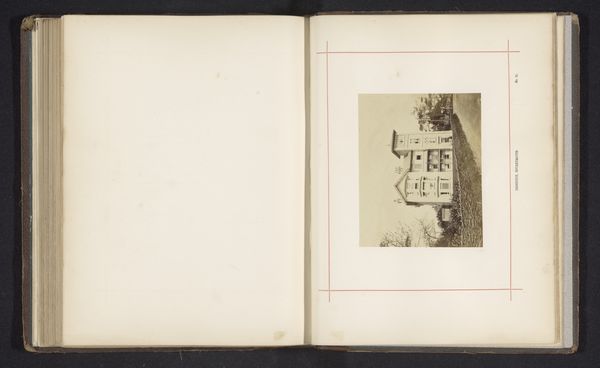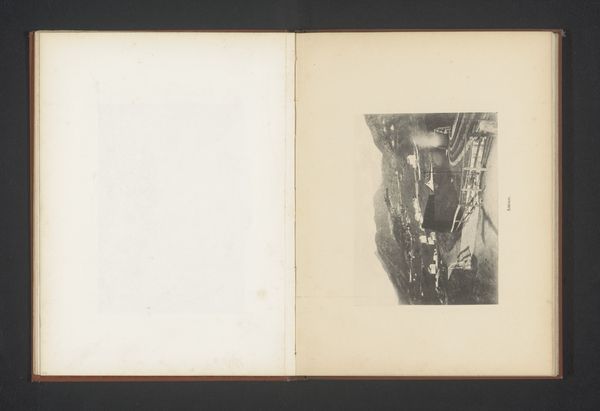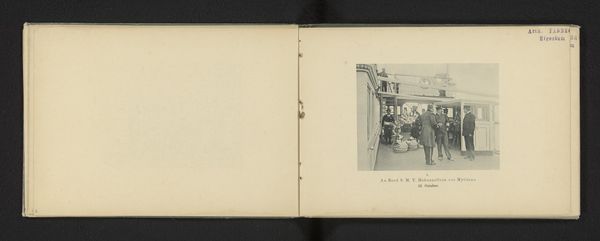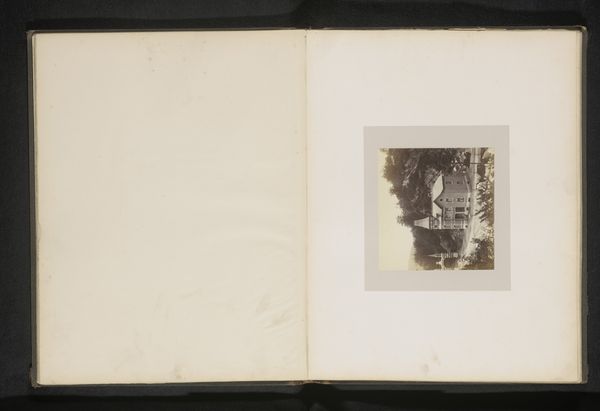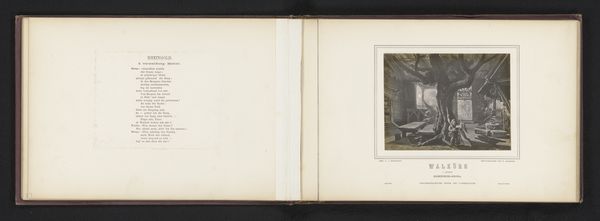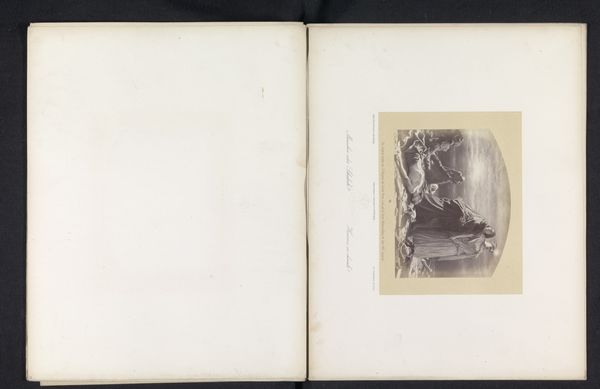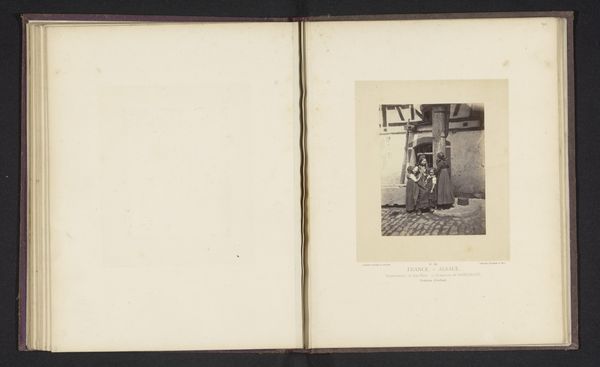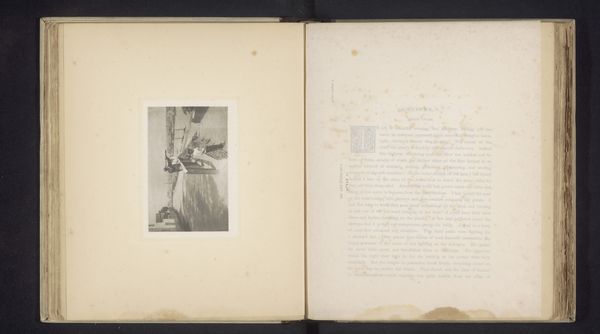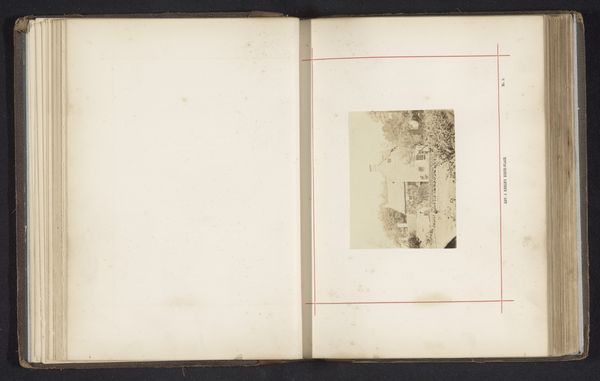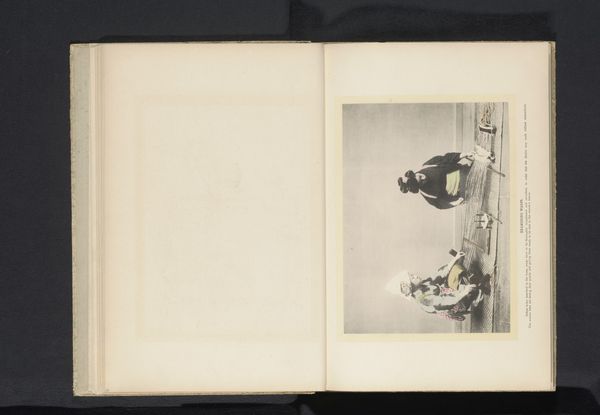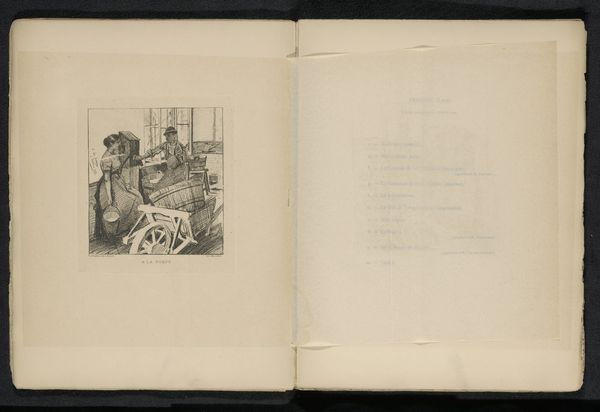
print, photography
# print
#
photography
#
genre-painting
Dimensions: height 172 mm, width 124 mm
Copyright: Rijks Museum: Open Domain
Curator: It’s incredible, isn’t it? The sheer industrial presence almost overwhelms the senses. Editor: It’s also terribly bland and sterile, despite the human presence in the image. Everything's bathed in sepia tones; the machine seems to lack dynamism. It looks staged, even complicit, like it's normalizing an inevitable march of technology into realms beyond our grasp. Curator: The print here documents “Draaimachine in het observatorium in Besançon,” showcasing the observatory's rotational machine captured by M. Lebeuf. The print likely dates before 1892, offering a glimpse into late 19th-century scientific infrastructure. Note the deliberate pose and how the man to the side helps to illustrate the scale of the equipment, making the scientific labor humanly digestible. Editor: Digestible, maybe, but what about the unseen labour that birthed such a machine? What narratives are missing from this carefully framed shot? We have a worker and a big instrument. But who conceptualized it, financed its production, or benefits from its capabilities? These photographs conceal as much as they reveal about societal dynamics. Curator: While these gaps exist, I also see the celebration of progress. Consider how the light and shadow emphasizes the mechanical form: circles and wheels become more than components. Instead, they become representations of movement and astronomical revolutions themselves, each one building from earlier understandings and calculations. Editor: Still, all that calculated precision in a pursuit rooted in colonialism cannot be ignored. Astronomical studies were often linked with navigation and asserting global dominance through timekeeping and mapping territories. Where does that responsibility rest when observing progress? Curator: Fair point. But progress also relies on these visual records—each diagram and technical manual represents centuries of cultural knowledge captured by various symbolisms and artistic liberties. What does the turning machine reveal that we had never accounted for without it? Perhaps this image is not only celebratory but interrogative, asking the question. Editor: Yes, these are valuable points. I’m reminded that technological advancement alone never brings societal change. As the artist visualizes such astronomical ambitions through a constructed vision, let us see the human hands operating its potential to transform lives while pushing progress toward equality. Let's remain vigilant. Curator: An admirable suggestion to ground the image in socio-historical realities and keep ourselves grounded too!
Comments
No comments
Be the first to comment and join the conversation on the ultimate creative platform.
